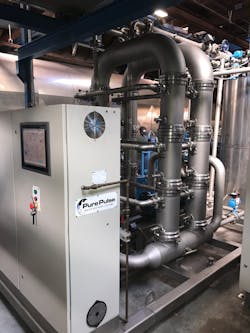Membrane Coating Technology to Boost Energy, Cost Savings in Commercial Laundry Sector
The project is focused on the recycling of heated wastewater in the industrial laundry sector and is a collaboration with Hydrasyst Membranes UK and Johnsons Textile Services, the market leader in the industrial laundry sector in the UK.
The project has received £450,000 of funding as part of the second phase of the Department of Business, Energy and Industrial Strategy’s (BEIS) Industrial Energy Efficiency Accelerator (IEEA), managed by the Carbon Trust.
The BEIS IEEA is aimed at harnessing innovative new technology to accelerate the decarbonization of UK industry in support of achieving the UK’s target of net zero greenhouse gas emissions by 2050.
Craig Clement, COO at G2O commented; “The project takes Hydrasyst’s PurePulse industrial laundry filtration system and seeks to significantly improve its efficiency by using G2O graphene-oxide coated ceramic membranes, which increases separation performance and efficiency, delivering clean warm water back to the wash floor. This reduces the need for heating between wash cycles, reduces water consumption and reduces chemical additions. It is estimated that a typical laundry could generate energy savings of over 2,700 MWh per year and reduce water consumption by 31,000m3 per year.”
Andrew Greenaway, Chairman at G2O commented; “This is a very exciting project for G2O and presents a tremendous opportunity to demonstrate the real-world potential of graphene to have a transformational impact on the economics of water filtration in industry. G2O and its project partners are thrilled to have been selected for support through the BEIS IEEA and believe this validates the strong value proposition of our combined technologies.”

